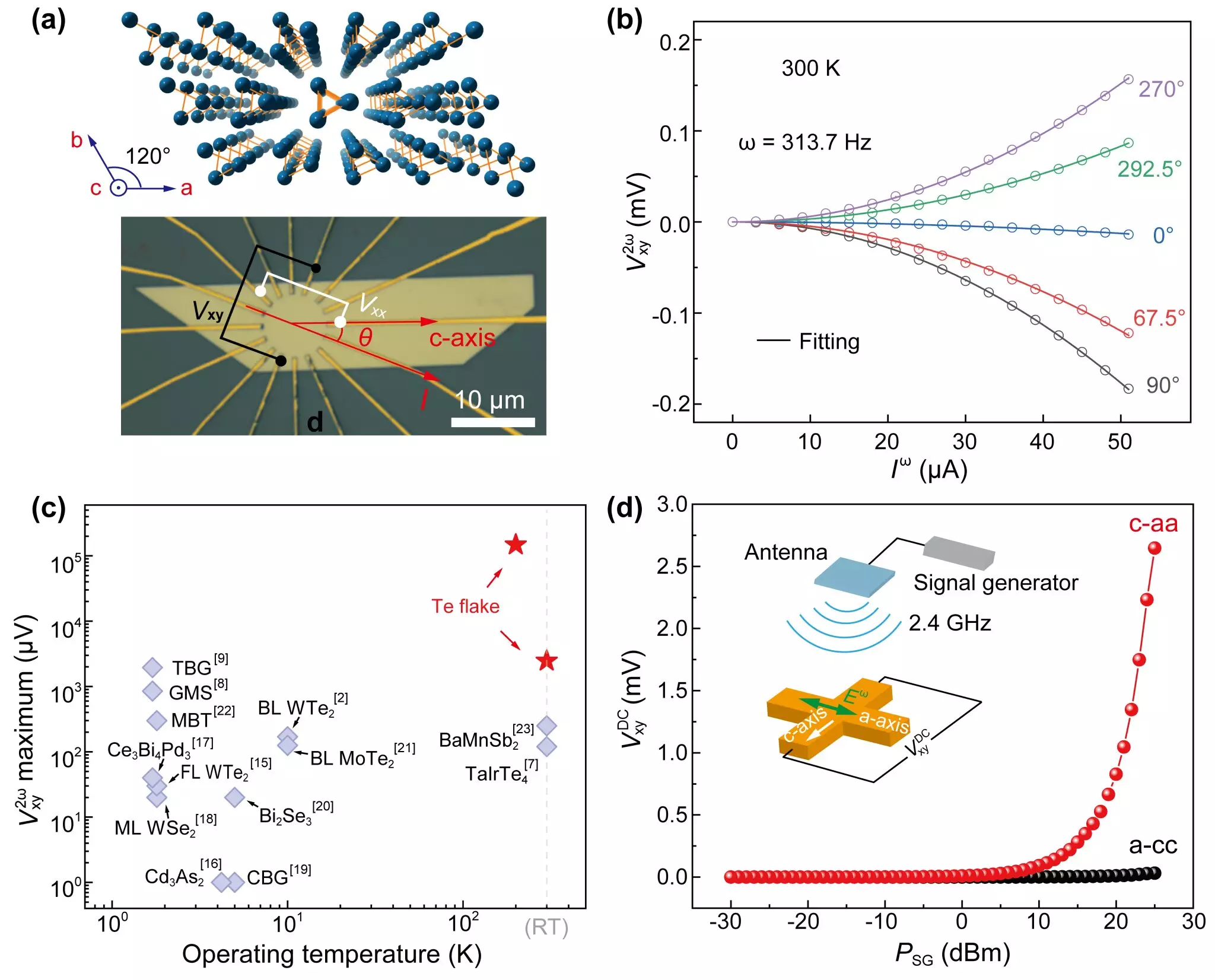Recent explorations into the characteristics of elemental semiconductor tellurium (Te) have unveiled groundbreaking findings regarding nonlinear Hall effects (NLHE) and the innovative potential for wireless rectification at room temperature. The research, documented in the esteemed journal Nature Communications, shines a light on the remarkable capabilities of Te, particularly its performance when subjected to alternating current (AC). This investigation is notable because it achieves significant AC responses without necessitating an external magnetic field, thus expanding the horizons for future electronic applications.
The study of NLHE has been plagued with obstacles that have stifled its potential practical implementations. Historically, researchers faced the dual challenges of low output voltages and the necessity for low-temperature environments to observe these effects. Most previous demonstrations of NLHE have been realized only under very specific conditions, typically in advanced materials like the Dirac semimetal BaMnSb2 and the Weyl semimetal TaIrTe4. These earlier efforts not only provided limited voltage outputs but also demonstrated a lack of tunability, which is crucial for versatile applications in next-generation electronic devices.
In an intriguing turn, the research team embarked on a quest to identify semiconductor materials that would elucidate a more substantial NLHE. They focused on Te due to its narrow-bandgap characteristics and its unique one-dimensional atomic helical chain structure, which disrupts inherent inversion symmetry—making the element an ideal research subject for non-linear phenomena. This innovative approach allowed the team to observe pronounced nonlinear responses in Te thin films, achieving remarkable tunable Hall voltage outputs through the application of external gate voltages.
The team’s experiments revealed that at room temperature (300 K), the second-harmonic output reached an impressive 2.8 mV, establishing a new benchmark in the field. Such output showcases an order of magnitude increase compared to prior studies, and critical analysis indicates that the NLHE in Te is largely driven by extrinsic scattering phenomena. The structural surface symmetry breaking of the thin film notably contributes to these significant results. This revelation not only underscores the efficacy of Te in harnessing NLHE but also provides valuable insights into nonlinear transport mechanisms across solid materials.
Building upon their NLHE findings, the research team took a pivotal step forward by transitioning from AC currents to radiofrequency (RF) signals. This transition enabled effective wireless RF rectification within Te thin flakes, accomplishing a stable rectified voltage output across a broad frequency range of 0.3 to 4.5 GHz. Unlike conventional rectifiers, which rely heavily on p-n junctions or metal-semiconductor interfaces, the Hall rectifier derived from Te’s inherent characteristics proposes a zero-bias, broadband response that elevates its applicability in energy harvesting and wireless charging technologies.
By dissecting the intricate mechanisms involved in NLHE within tellurium, this research not only advances fundamental science but also sets the stage for the development of pioneering electronic devices. The potential for improved efficiency and reliability in power harvesting solutions ignites a spark of creativity among engineers and scientists alike. This study, fruitful under the guidance of Prof. Zeng Changgan and Associate Researcher Li Lin from the University of Science and Technology of China, illuminates remarkable pathways for future work in the realm of advanced electronics, indicating a shift toward more versatile, high-performance materials.


Leave a Reply